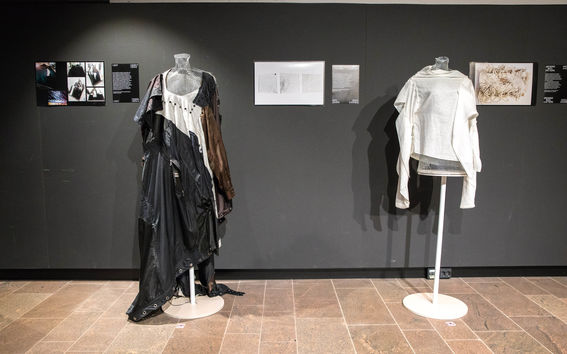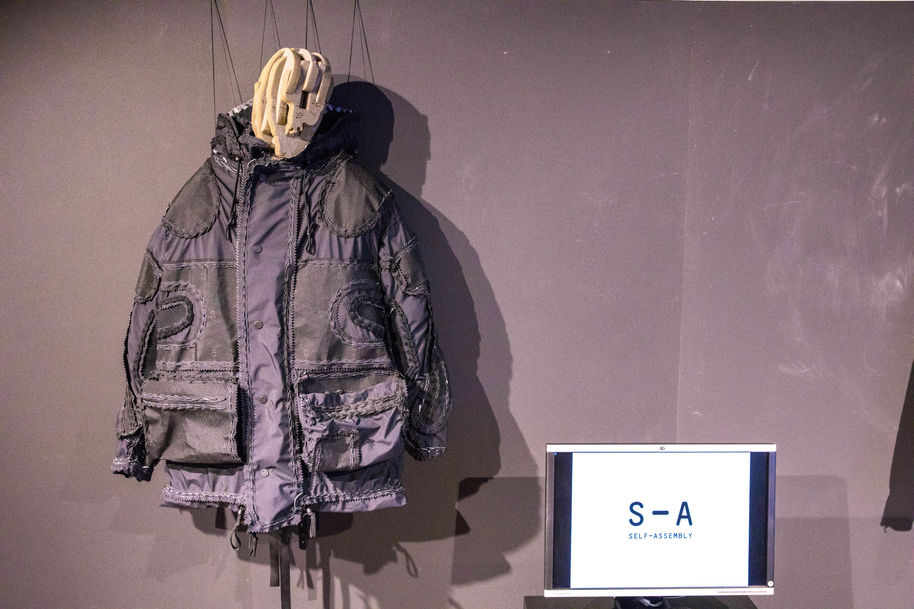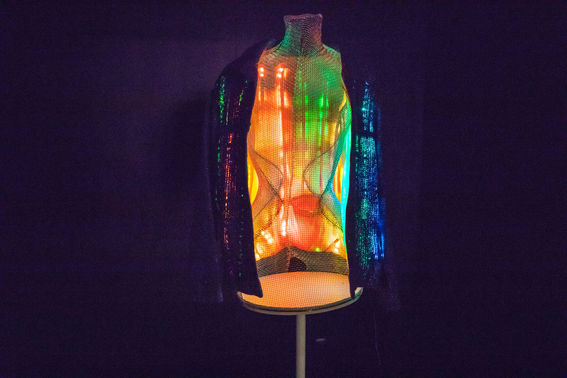New methods in fashion and clothing design

The starting point of all designs presented in the exhibition has been to solve a problem related to the garment’s structure or manufacturing process in a new way. The exhibited work highlights how problem solving can be approached in different ways during the phase of creative planning.
‘The exhibition makes the creative process of clothing design visible. Designers have developed new approaches that can influence the shape and structure of clothes,’ says exhibition curator, Professor in Fashion Design Pirjo Hirvonen from Aalto University. ‘Clothes, and especially fashion, are often only evaluated from the outside. It is important to bring to light processes and methods that can lead to new and innovative solutions. Designers can make a lot of choices affecting, for example, the functional characteristics of clothing, its reuse, customisation or material loss.’
The exhibition displays a garment construction kit associated with Matti Liimatainen's doctoral work, Eveliina Ronkainen's master's thesis work and the prototypes created in the Innovative Fashion Designmaster’s course. One example of a bachelor’s diploma project is also included.

Self-assembly / Matti Liimatainen
Self-assembly is a clothing brand that produces ready-to-assemble garment construction kits. All S-A products have been manufactured by using a special type of seam, which allows allows them to be assembled by hand, completely without machines or tools. Furthermore, the assembly does not require any prior skills or competence of the garment construction: all work phases are explained in the accompanying assembly manual. The pieces can also be easily removed from each other, so the products can be disassembled and reassembled, for example, mixed together in new colour combinations. In January 2019, Self-Assembly participated in the Mona Foma festival in Tasmania, Australia.
Energising: a garment as a source of vitality / Eveliina Ronkainen
Busy everyday life can be exhausting. This Master of Arts thesis project examines how to increase the user's vitality and energy through clothing and textiles. In addition to colour, light and light electronics, FIR (far infrared) and compression textiles have been studied to positively simulate the user. The women's clothing range has been knitted at the Aalto University knitting studio in Otaniemi and the Santoni Shanghai Knitting factory in China.
Weaving material directly into the shape of the patterns / Natalie Ahonen
The most important element in the project was the ecological producing method. The project started from an idea of creating material directly into a pattern, in which case material consumption would be based on the actual product, and wastage would not occur. The aim was to utilise and respect one of the traditional craftsmanship techniques of weaving, which gives possibility to do almost any kind of shapes. The project was inspired by vintage Finnish ragrugs and their visual effect expressed garments.
Square Folding / Sofia Ilmonen
This technique focuses on minimising fabric cutting waste by using angular shapes that fit on the entire width of the fabric. All patterns are squares and the shape of the garment is created by folding and draping the fabric in different ways. Instead of sewing, the pieces are attached to each other by button and loop mechanism which allow for the clothes to be modified to the desired fit or length by changing the position of the buttons. The garment consists of four square pieces.
Tent / Hanna Herva
My theme is associated with the body and our experience of it through body movement and nature experiences. With the help of clothing, I try to eliminate the prejudice related to the aesthetics of outdoor clothing, and the difficulty of carrying stuff around. My aim is to create a garment free from the stigma of sports clothing, which can be both worn and used as a tent. I approach the task primarily from the perspective of fashion, separating it from other previously designed, adaptable tent clothes. The main focus is on the material I have selected: lining removed from old jackets.

Light jacket /Heini-Maria Hynynen
Light jacket is inspired by Depeche Mode’s Barrel of a Gun music video. The idea was to create a garment that changes its colour and pattern. The jacket consists of 600 independently functioning LED lights that move and change colour. The material is hand-painted and glittered wool. The LED light jacket was created in the Wearable electronics and fashioncourse. The jacket was part of Hynynen's bachelor's diploma and it has been exhibited, for example, at the Bozar Center in Brussels.
Exhibition design: Matti Liimatainen
Exhibition curator: Pirjo Hirvonen
Graphic design: Joosung Kang

Aalto galleries and exhibition venues
How can we make space for unexpected ways of looking at the world? Galleries and exhibition venues are co-produced spaces for action, bringing together the knowledge, content, vision, and passion of different agents.
Read more news

Research Council of Finland establishes a Center of Excellence in Quantum Materials
The Centre, called QMAT, creates new materials to power the quantum technology of coming decades.
Major funding powers development of next-generation machine technology aimed at productivity leap in export sectors
The BEST research project is developing new types of sealing, bearing, and damping technology.
The TAIMI project builds an equal working life – a six-year consortium project seeks solutions to recruitment and skill challenges
Artificial intelligence (AI) is changing skill requirements, the population is aging, and the labor shortage is deepening. Meanwhile, the potential of international experts often remains unused in Finland. These challenges in working life are addressed by the six-year TAIMI project funded by the Strategic Research Council, and implemented by a broad consortium.






